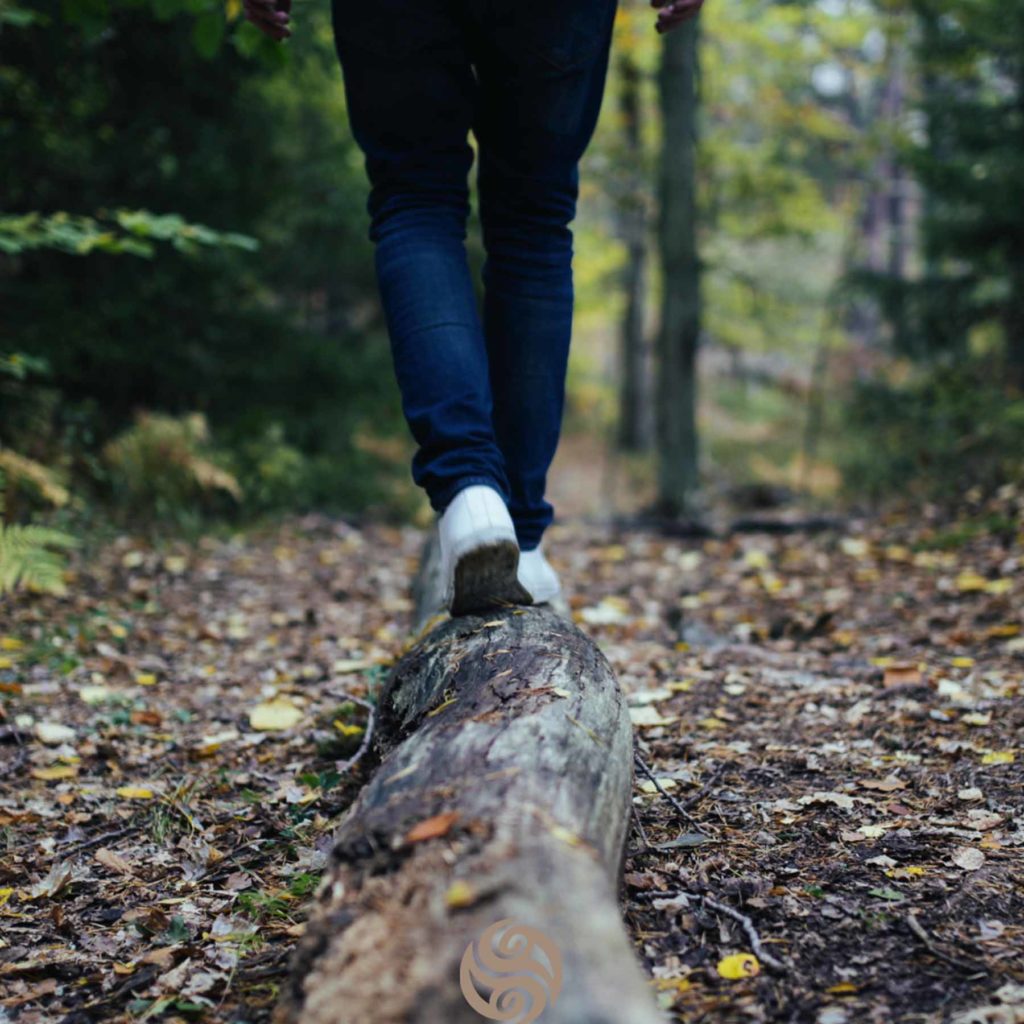Balance

Balance is defined as an even distribution of weight enabling someone or something to remain upright and steady. When all cells in the body are in their rightful place, effortless effort is the result, meaning you have the ability to stay upright with the least amount of work required. Unfortunately, this is not the case for the majority.
Although most of us have maintained the ability to remain upright, it isn’t without its challenges. We age in a forward, rotational direction. This is partly due to the fact that we are dominant on one side, causing an imbalance in the body left to right from the overuse of one side, and the underuse of the less dominant side. Also, as the eyes are in the front of the head, it is our natural tendency to draw the head forward and down, which pulls the body off-balance, causing a tipping.
The fascia responds to these forces by creating false walls and false floors -- the body’s way of adapting to remain upright. These dense and entangled fibers that magnetically seal to provide a splinting of the body come with a torrent of chaos deep inside, causing many health issues. As there are multiple forces pulling the body in different directions, like a spider web, the fascia reaches to grip and seal onto the nearest ledge, having to continually adapt and adjust to prevent the body from falling. The further the body moves away from its perfection, the greater the tension throughout.
The butt and low back experience a ton of tension due to the space between the pelvis and ribcage. The waist is the only area in the body not supported by bone. This provides a great deal of mobility, allowing us to bend forward, rotate and extend. The mechanics behind this gives us the freedom to express ourselves through dance, to play high level sports requiring rotation, to bend forward for periods of time for activities like gardening . . . and any other movements the body undergoes to perform in life. Tensions arise when false walls and floors develop from an imbalance in alignment.
To prevent tensions from developing, we need to maintain proper postural foundations. In past blogs, we talked about the knees being the levers of the body, and when they hyperextend, the body tips forward. As this is such a common postural default, most people have lost the space in the waist and also lost the foundation to support the cells. The forward tip drives the ribcage to collapse into the core and creates a misaligned pelvis, and the legs are forced to splay to manage gravity’s pull. This forward rotational descent forces the butt and back muscles to constantly fire, generating tension and pain from overuse and misuse.
This week in our 90 Day Challenge, we are focusing on the butt and low back to create a relief from tension and to bring the body back into balance. We should have 60% of our weight on our heels, yet most of us have about 80% on the balls of the feet. In this case, the upper body is literally hanging forward, and the muscles in the low back and butt are having to hold it up. They never get a break from this tension when we are standing, and the result is chronic back pain, tightness and pain in the hips joints and issues with the reproductive and eliminatory systems, to name a few.
If these issues are common to you, there is a solution. As we always talk about cause sites and pain sites, the entire body needs to be addressed to bring balance and symmetry back to the cells. A perfectly aligned body would have no tensions -- no need to develop false walls and false floors. This is the focus of week 4 in the challenge, with the past 3 weeks being devoted to positioning the legs and feet as they are directly responsible for issues up the chain. Releasing adhesions in the butt and back will allow the hips to migrate to their correct location and support rooting -- the postural actions required to reinforce lower body alignment.
If you are curious about this practice and would like to hear what others have to say, please join our private Facebook community group. There is a plethora of wisdom amongst the members who are always willing to support and guide you on your healing journey.
Breathe & Believe








Balance has been a very big problem after sustaining 2 concussions 14 months apart. Although 4 years out from the last concussion, I very much look forward to regaining balance.